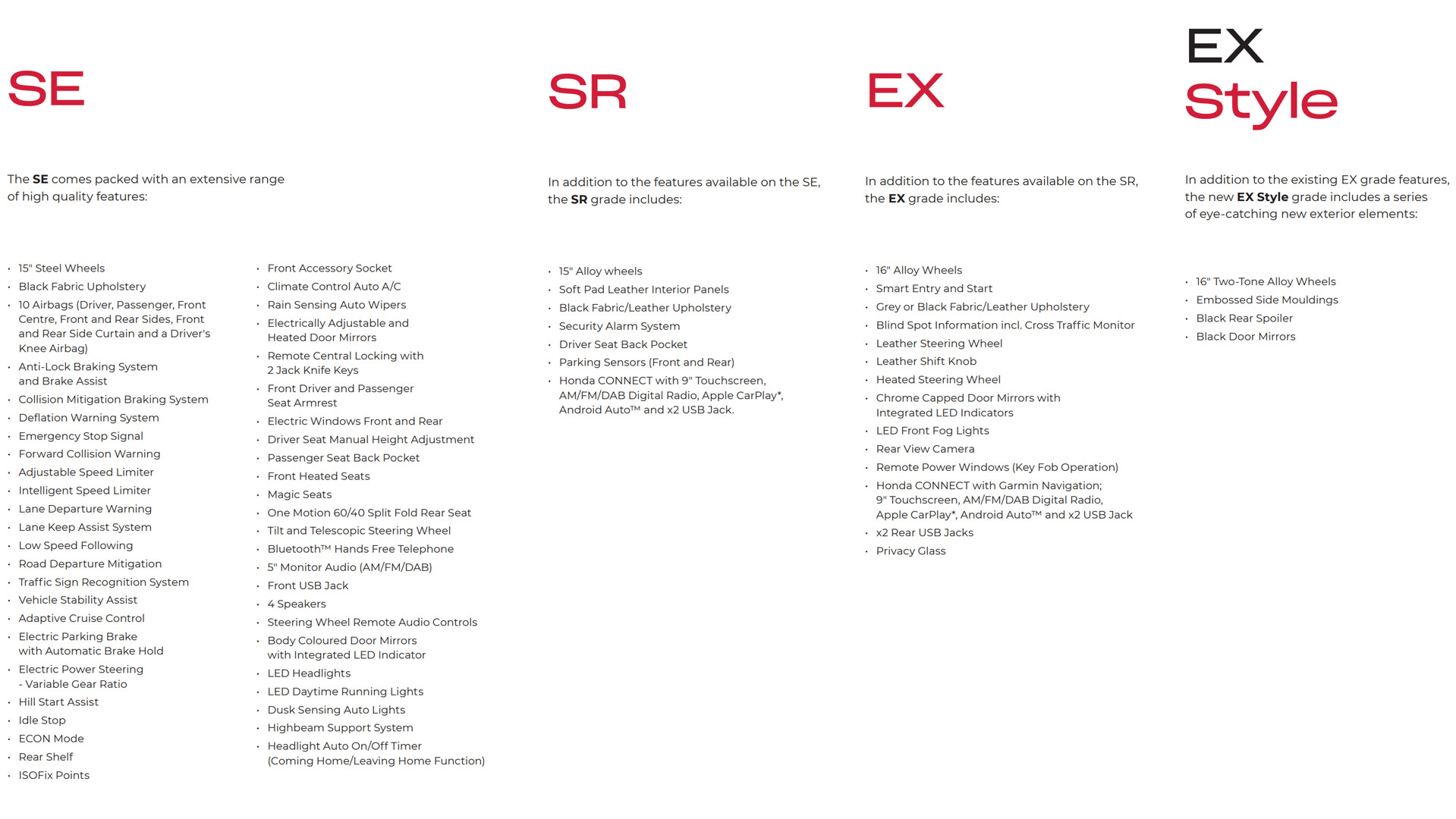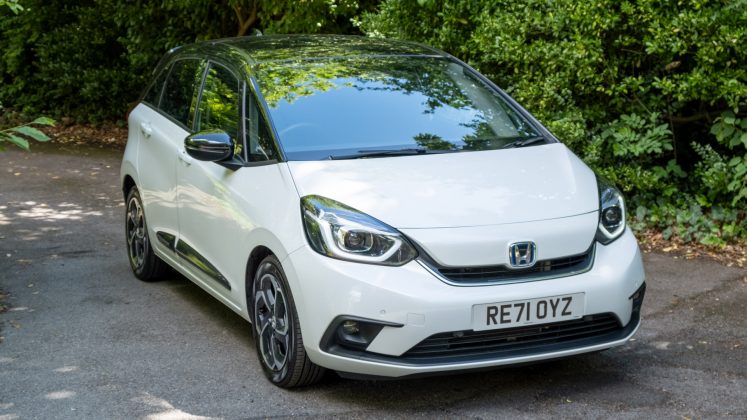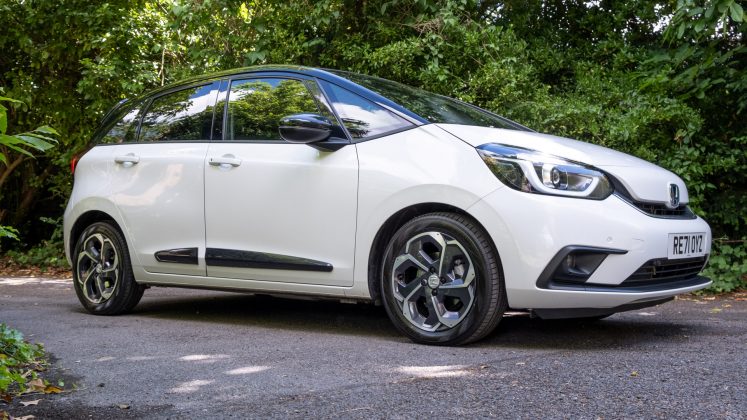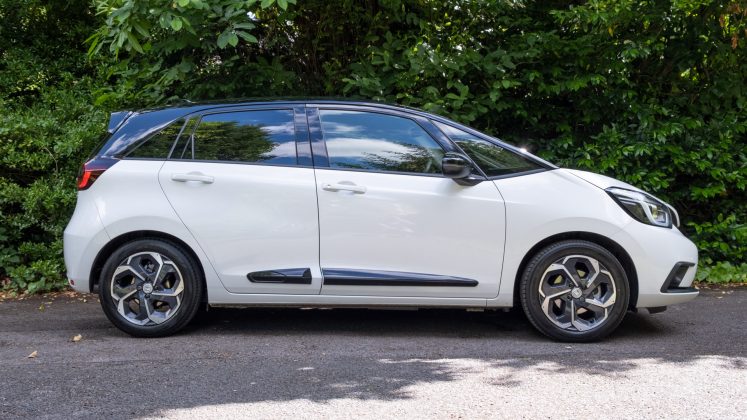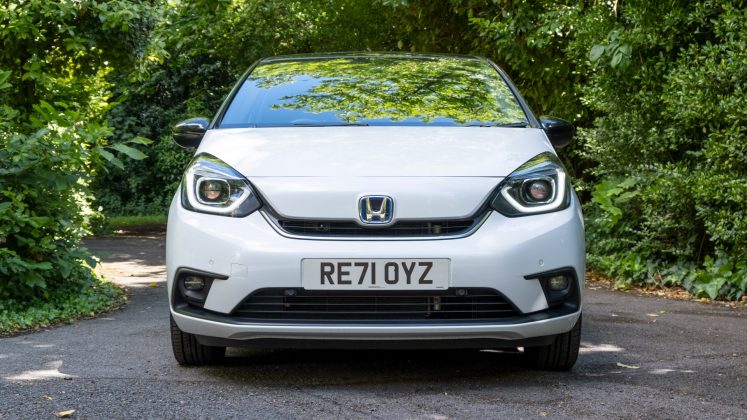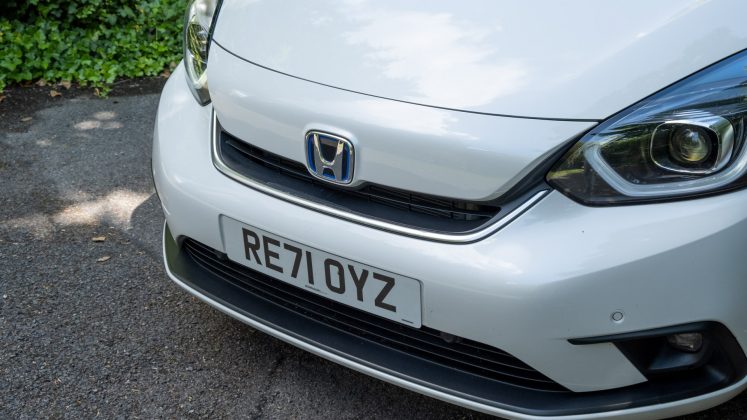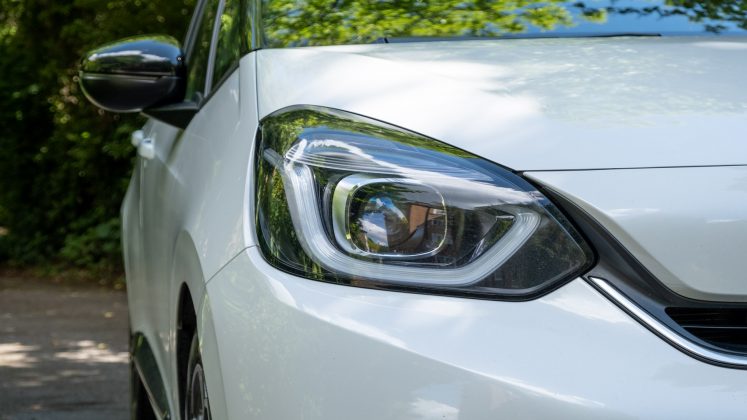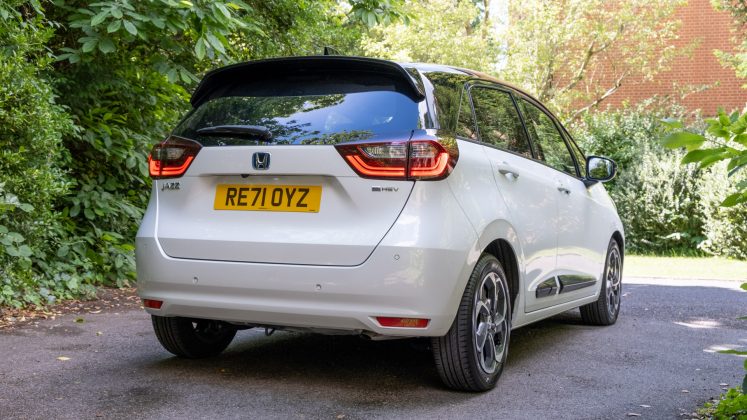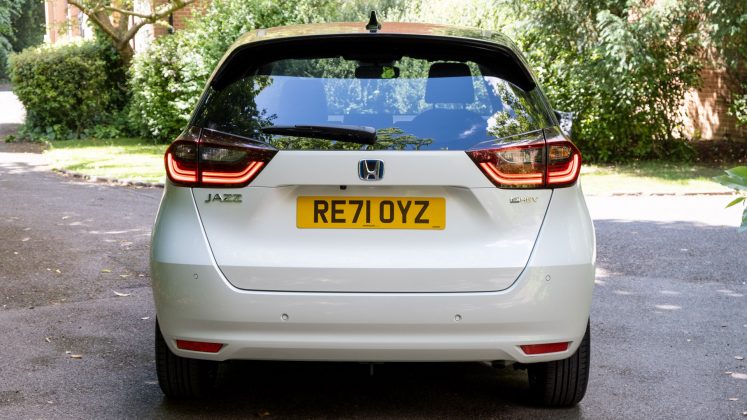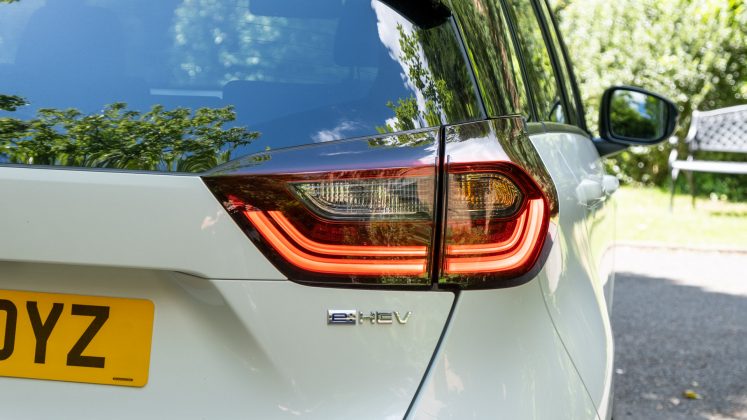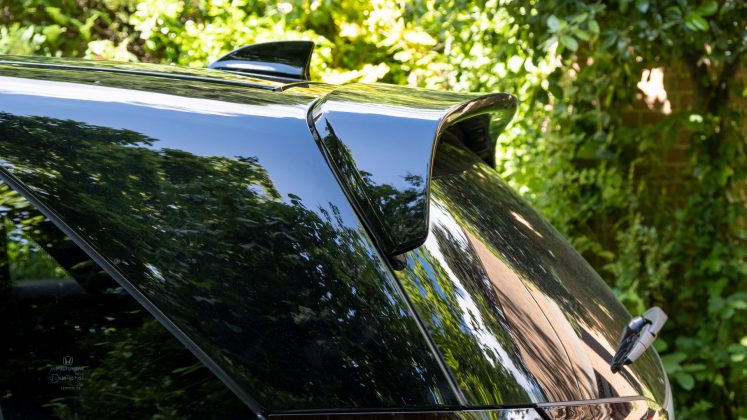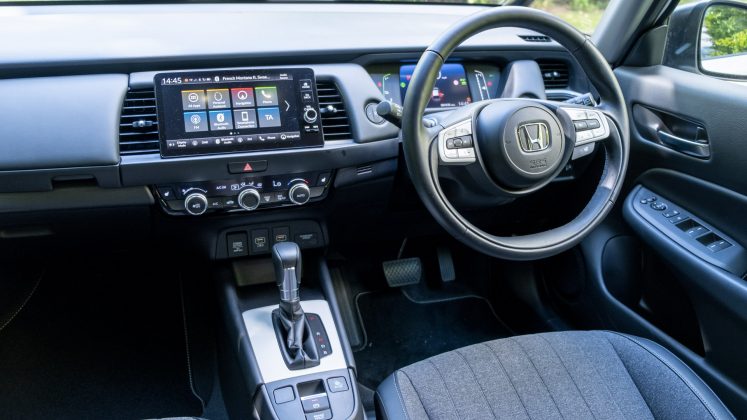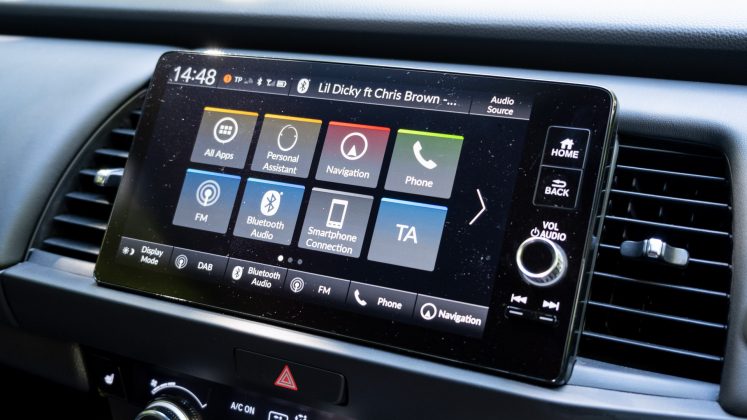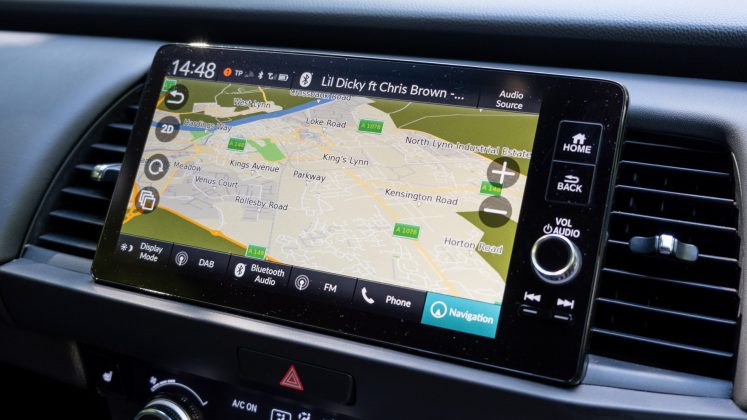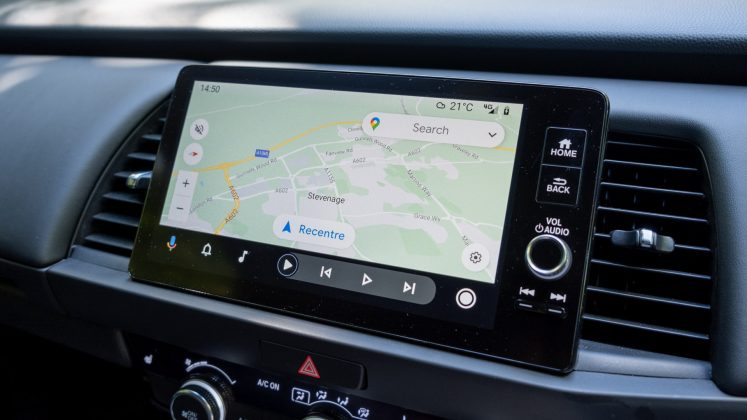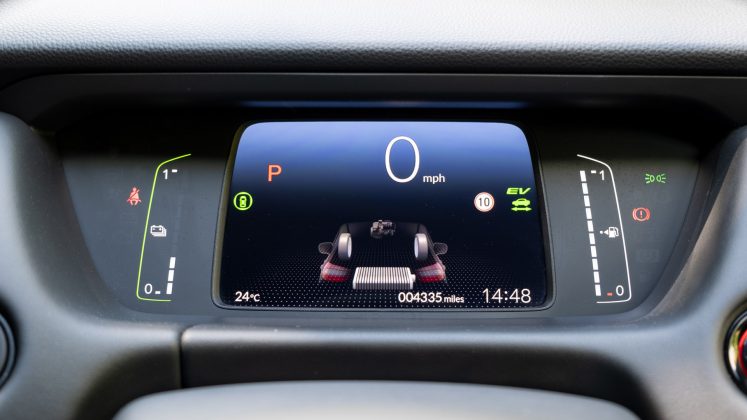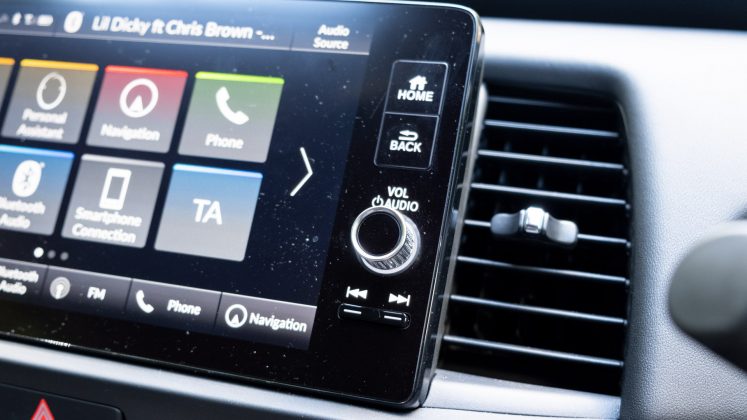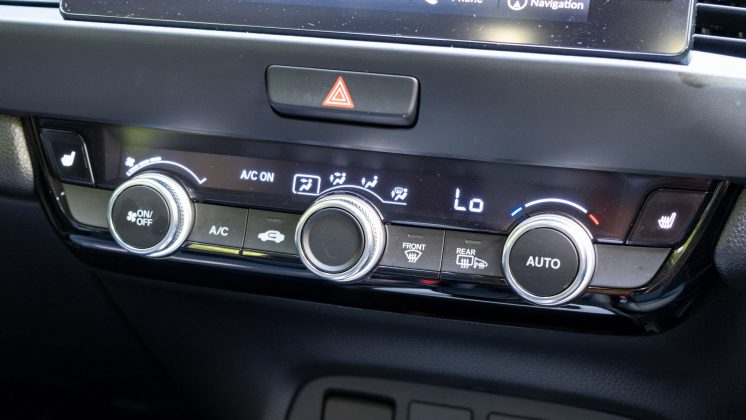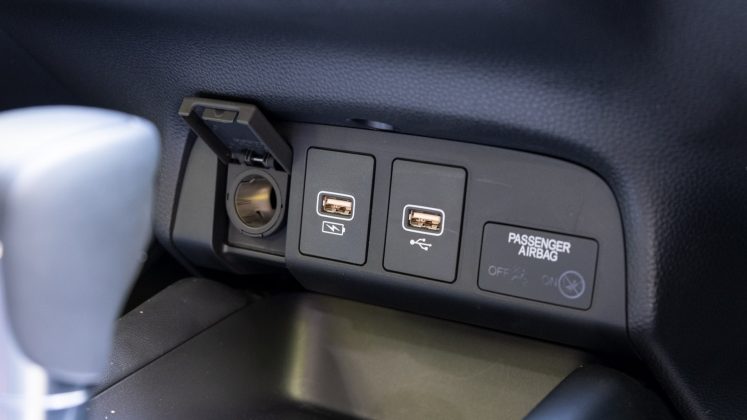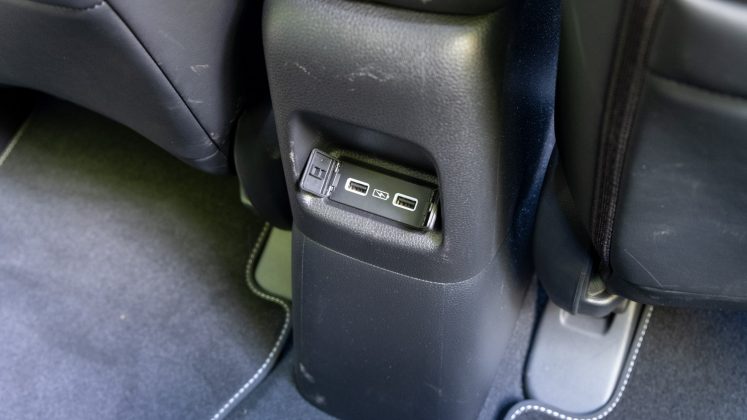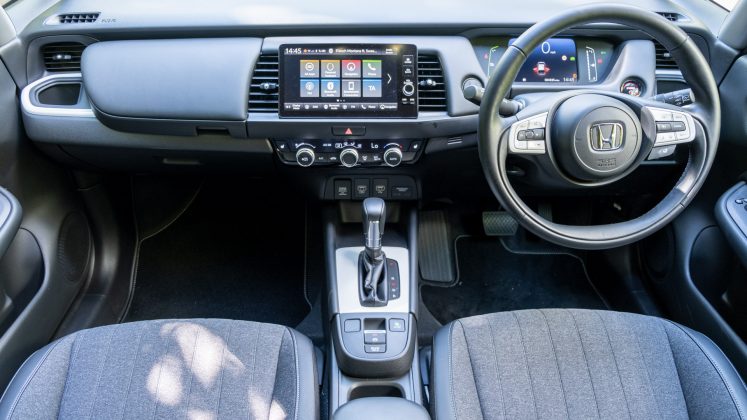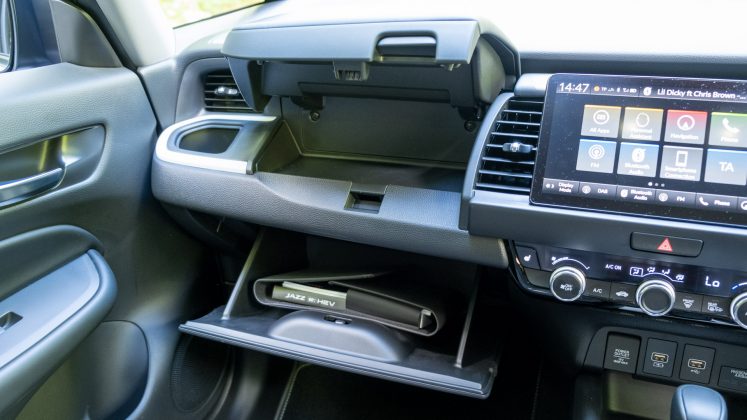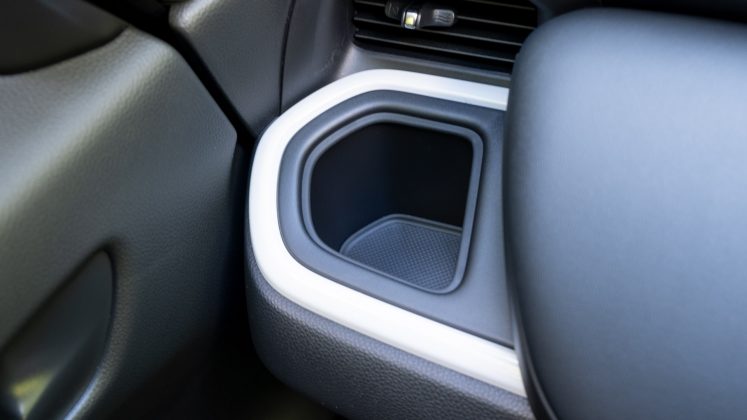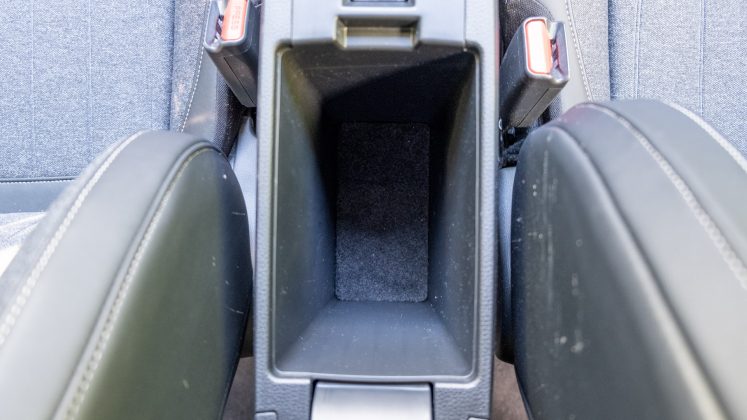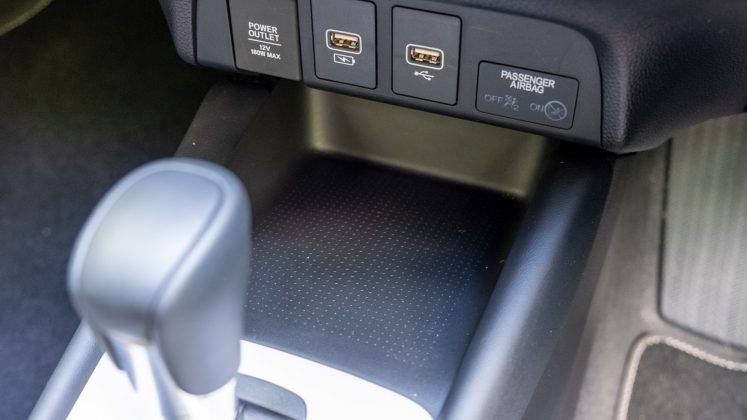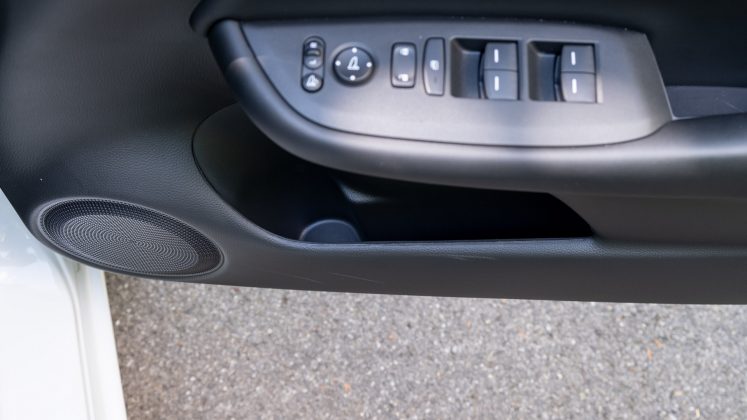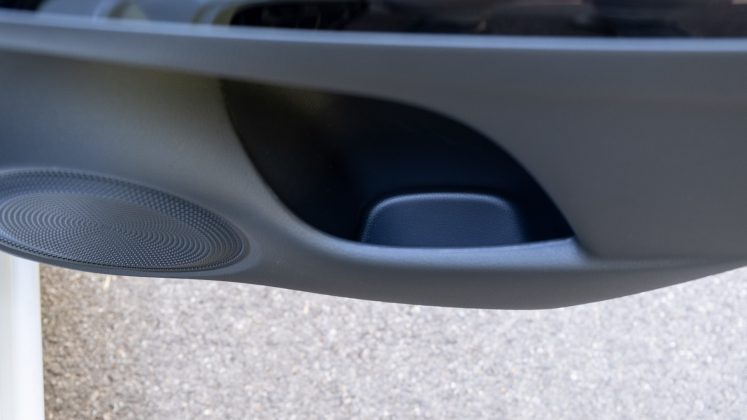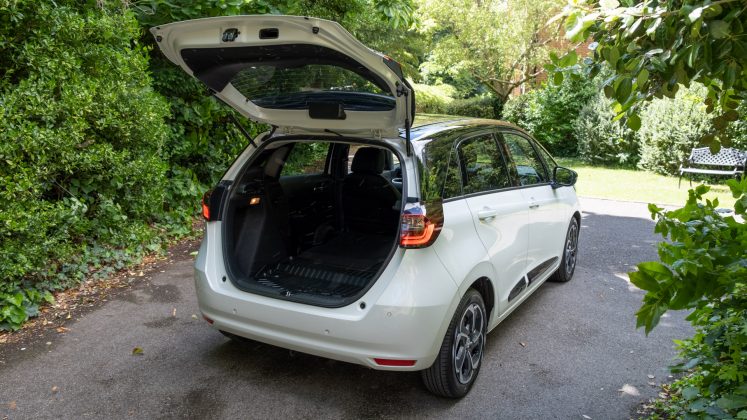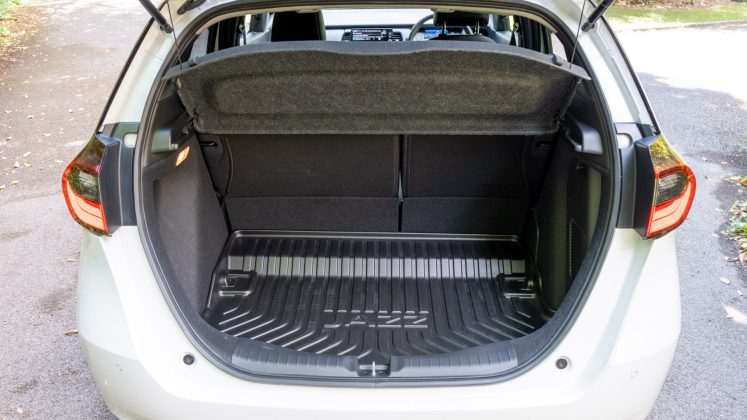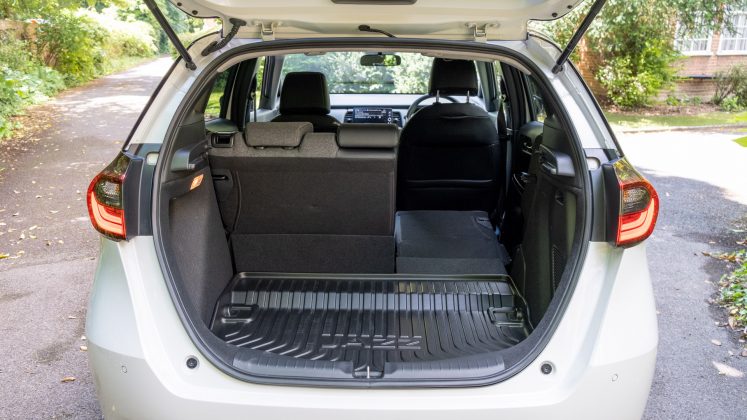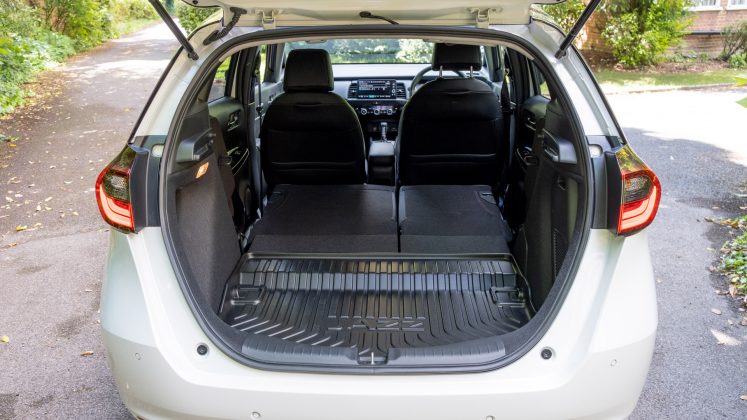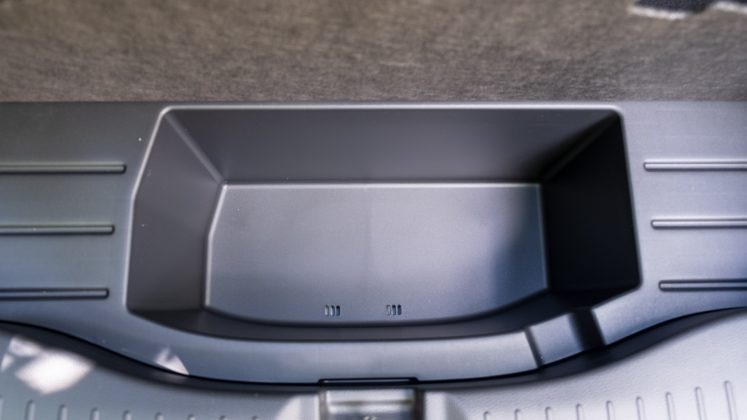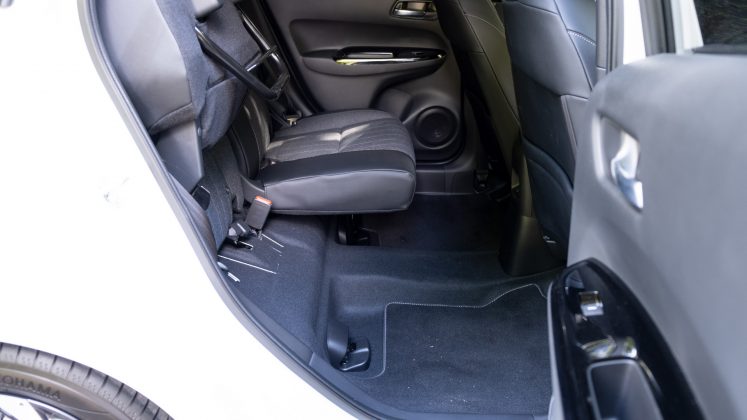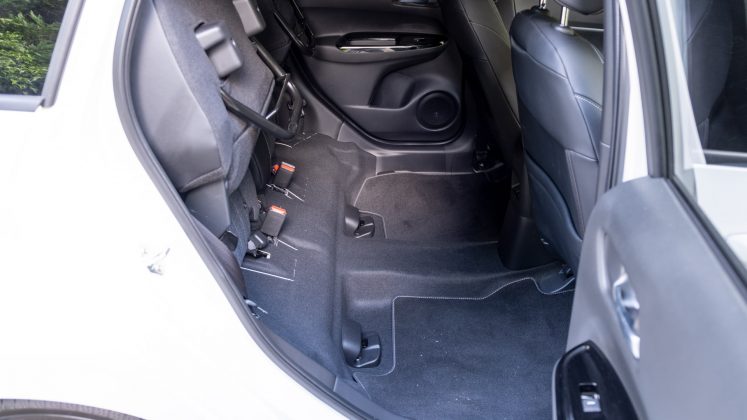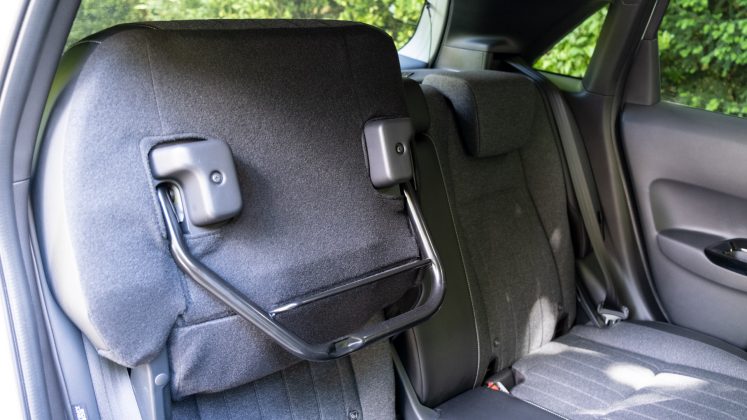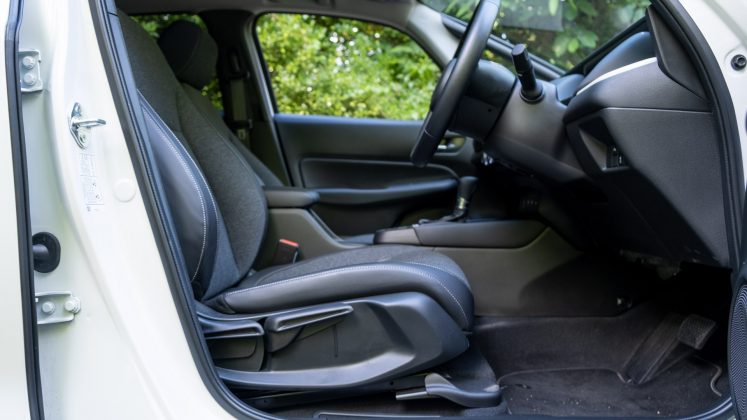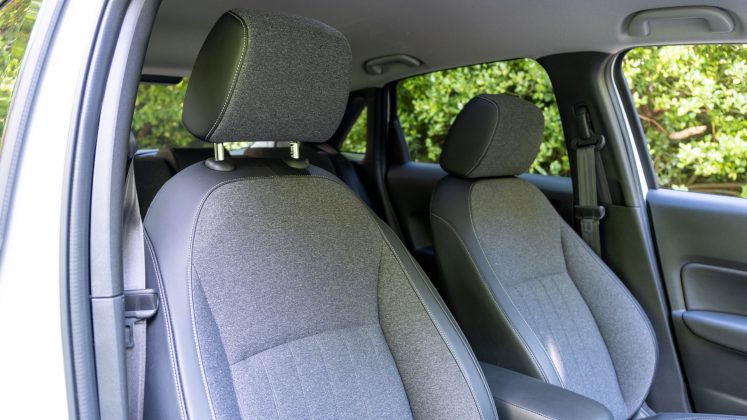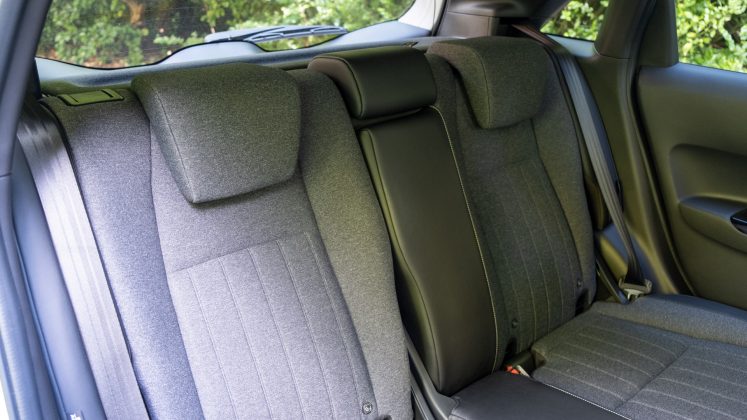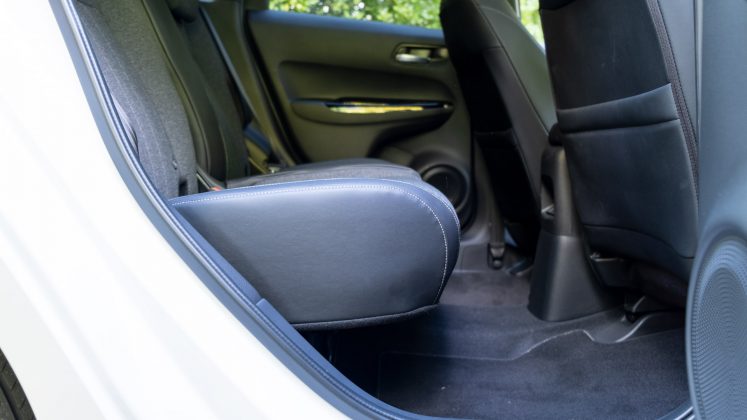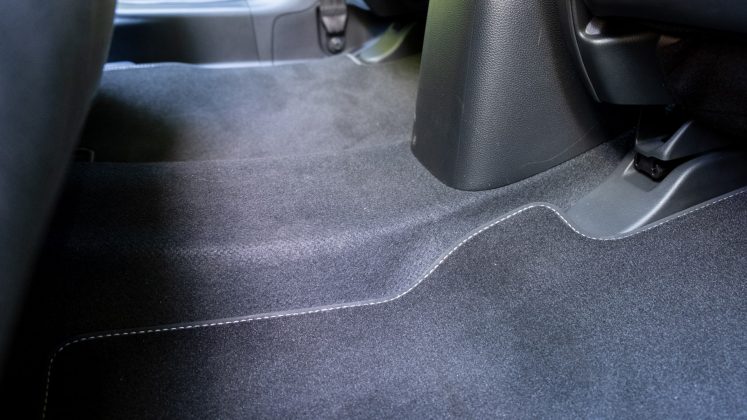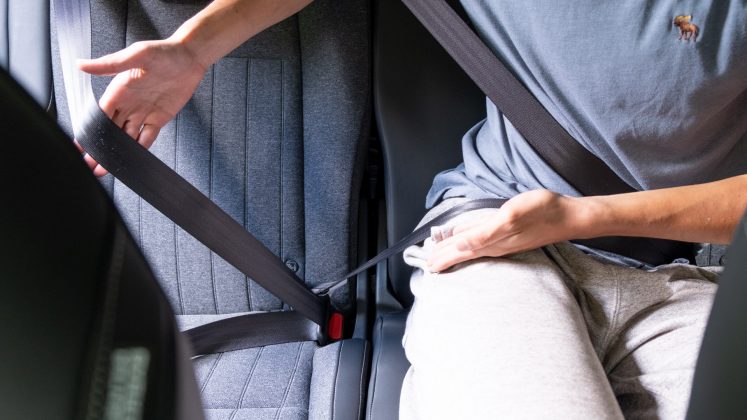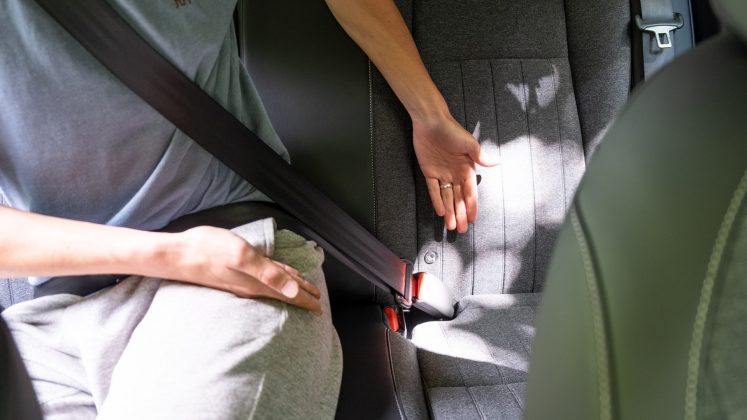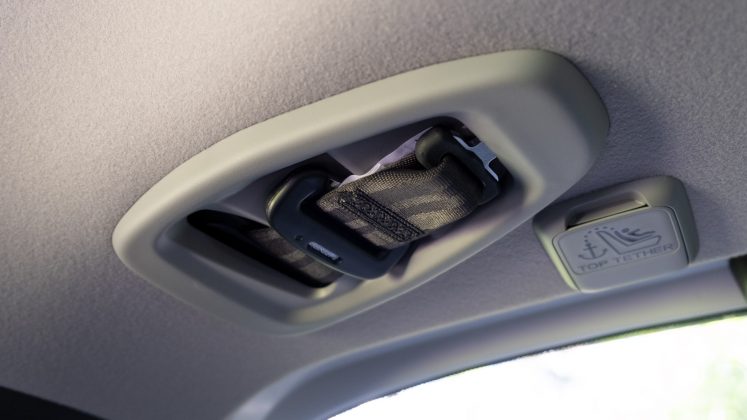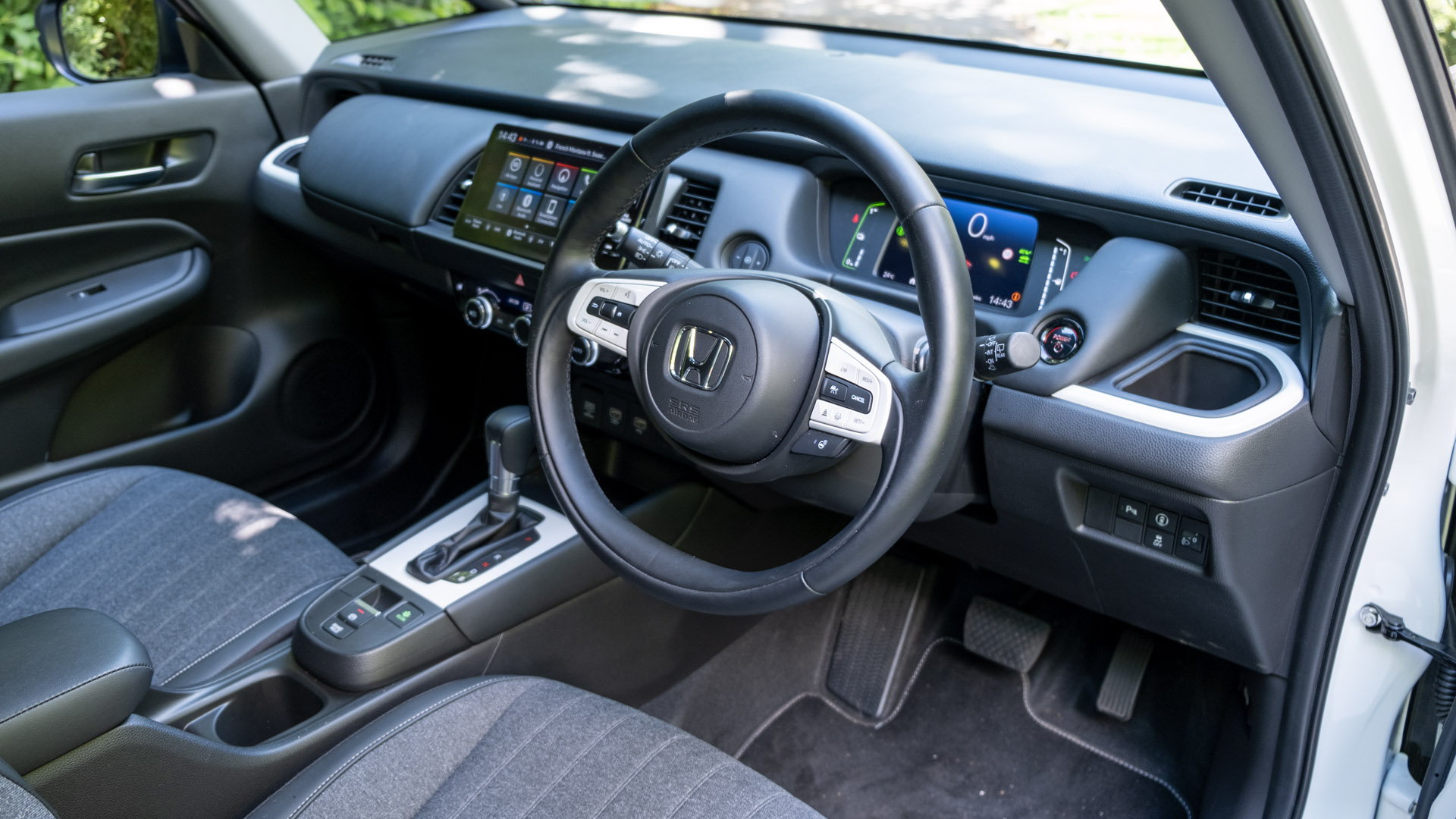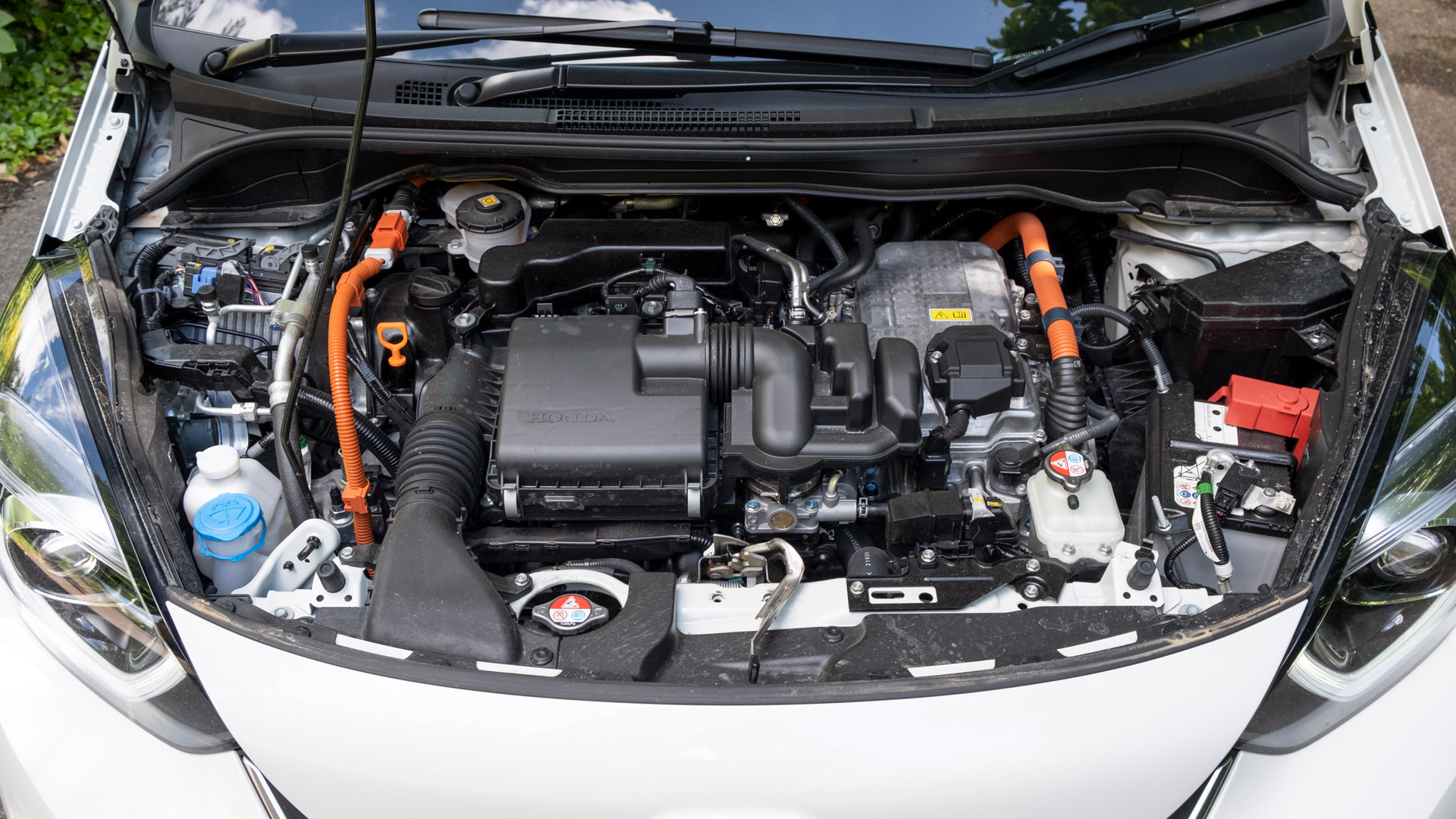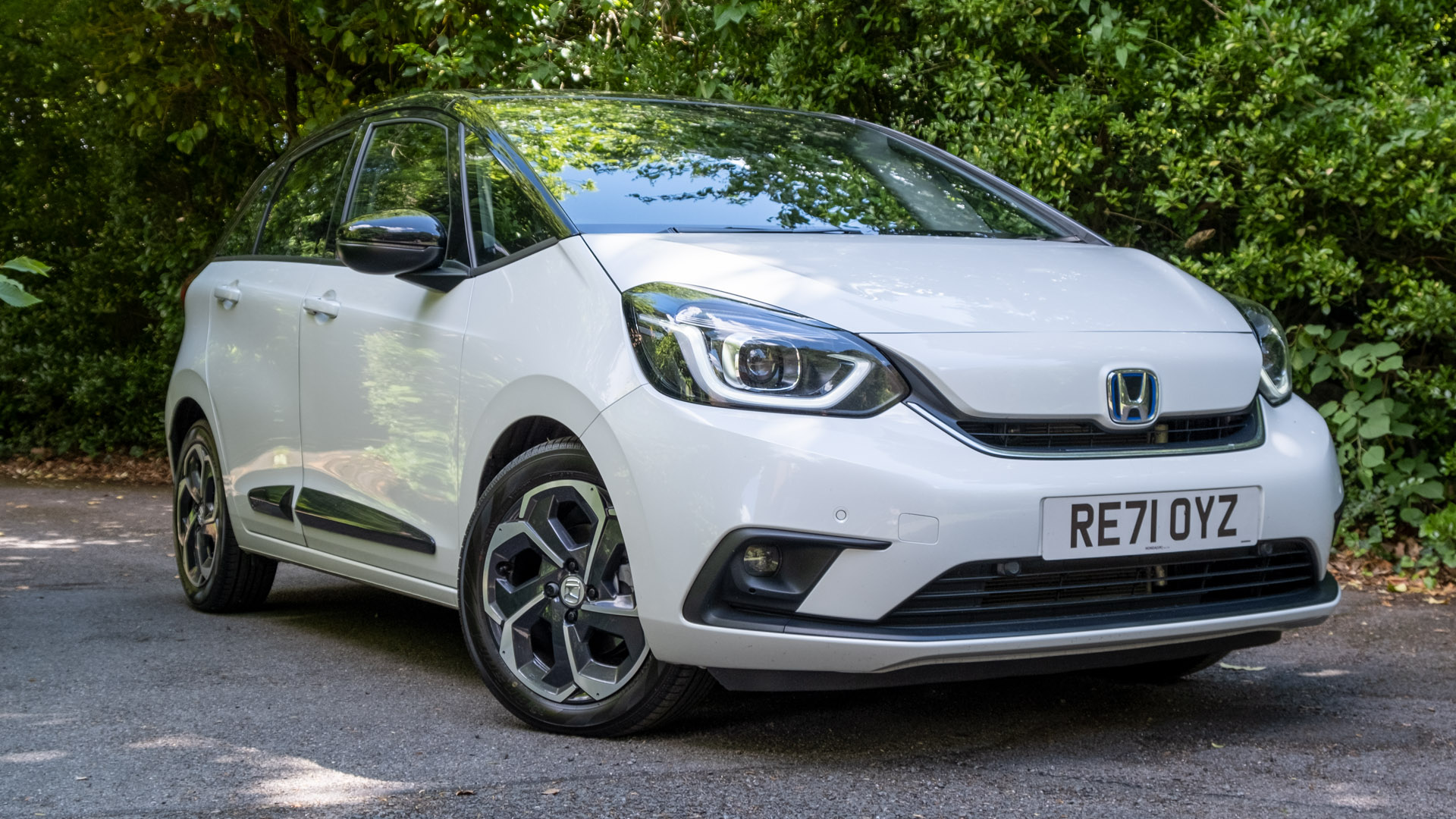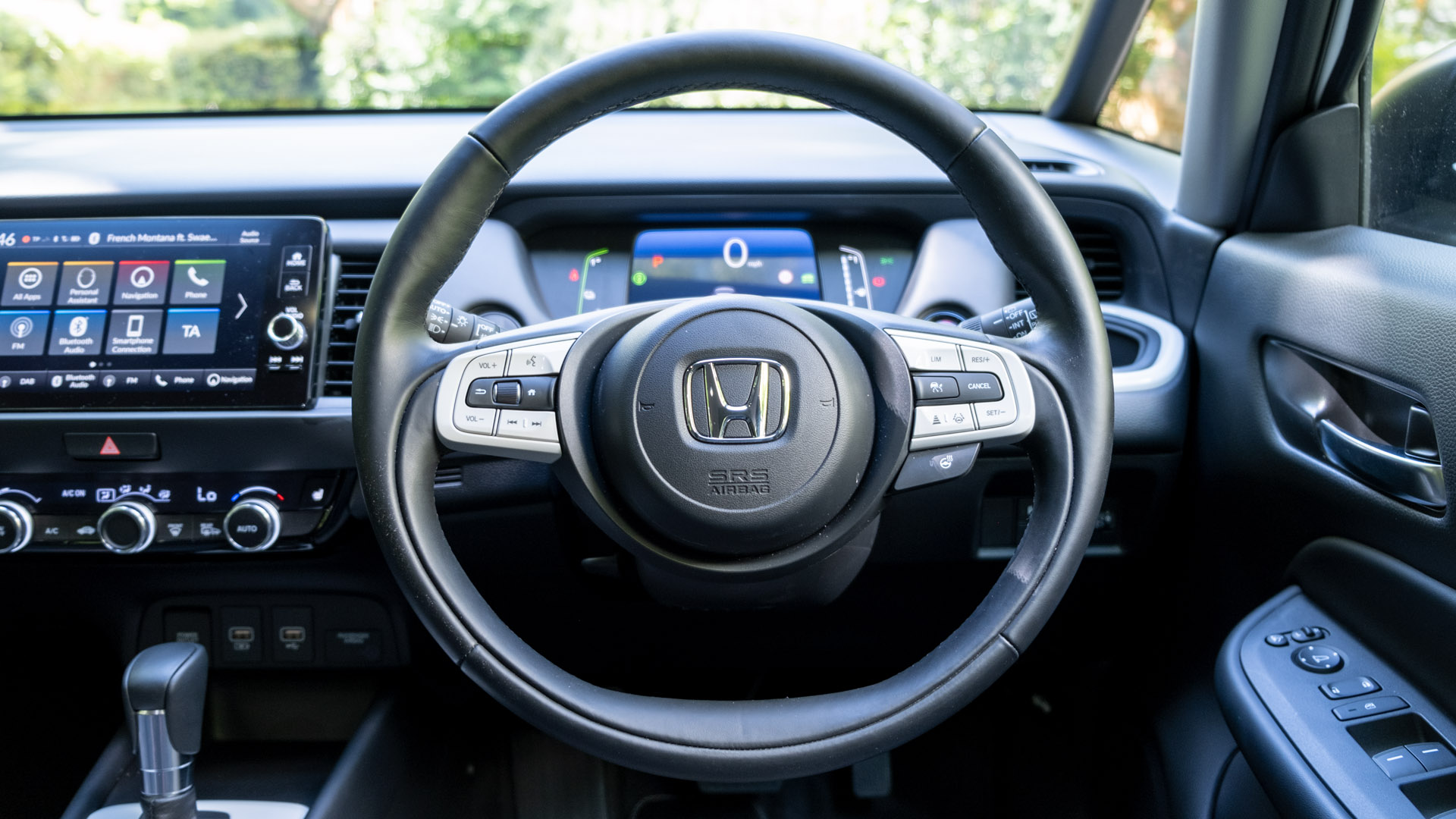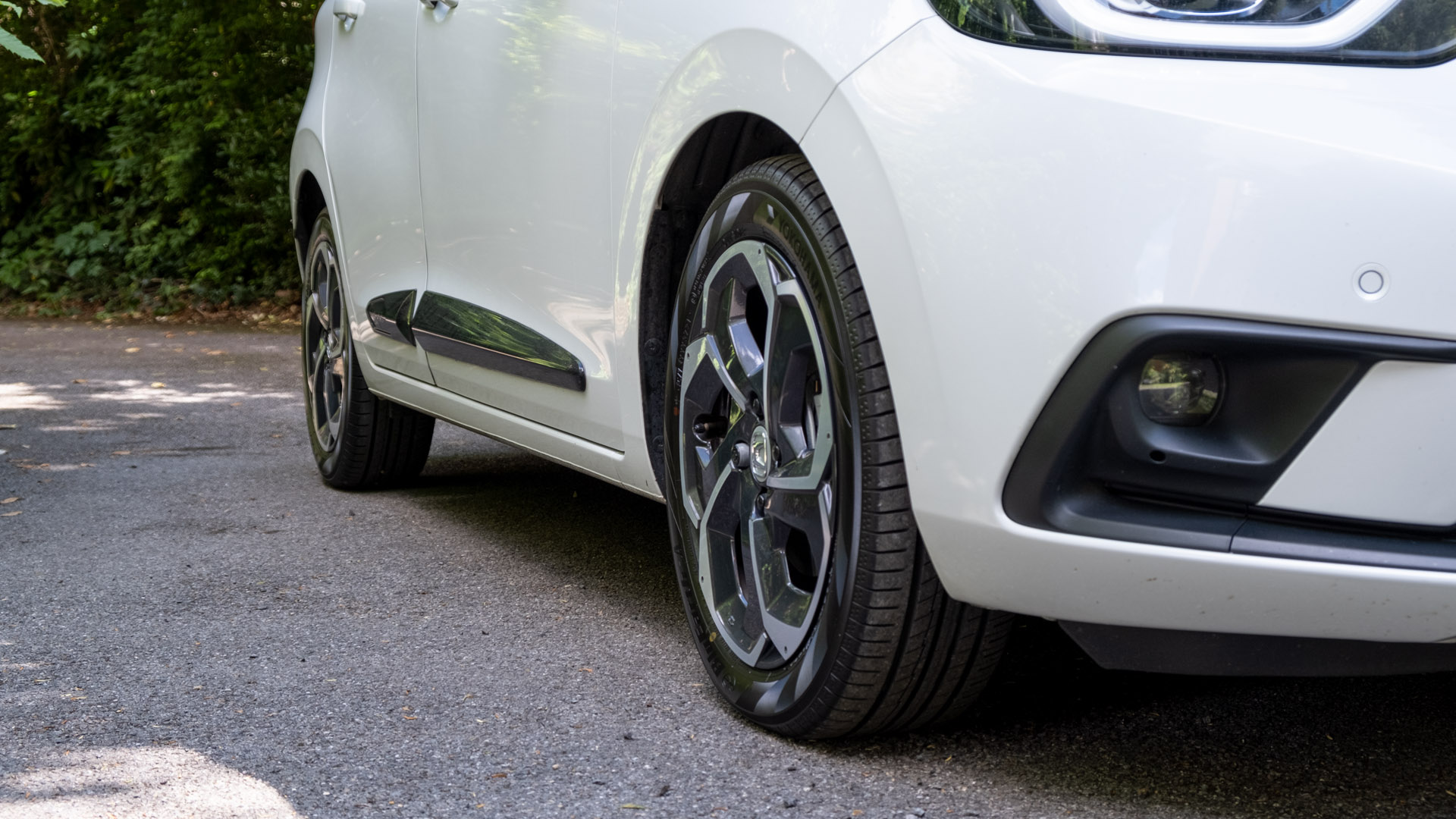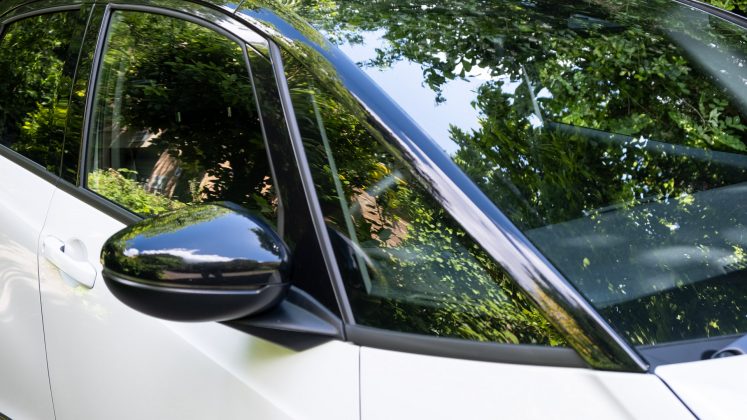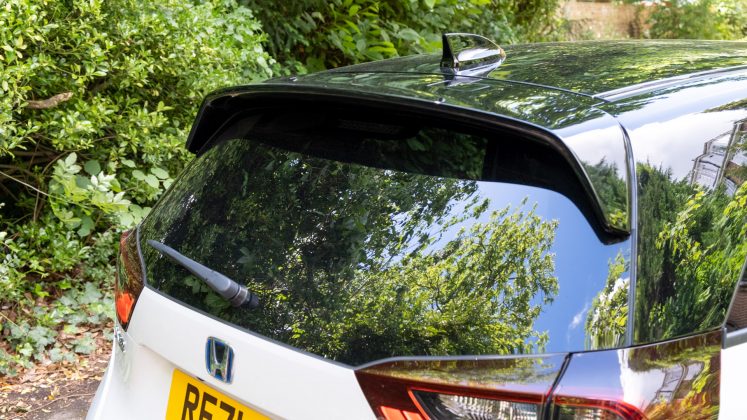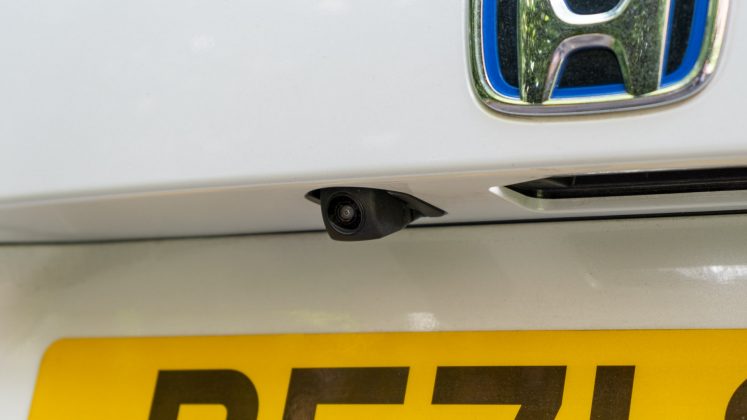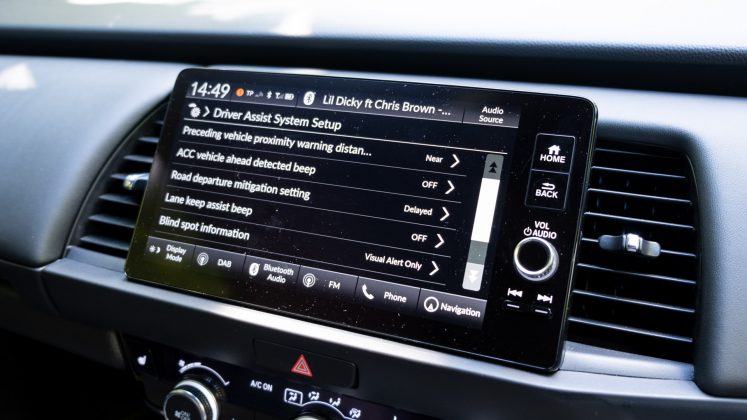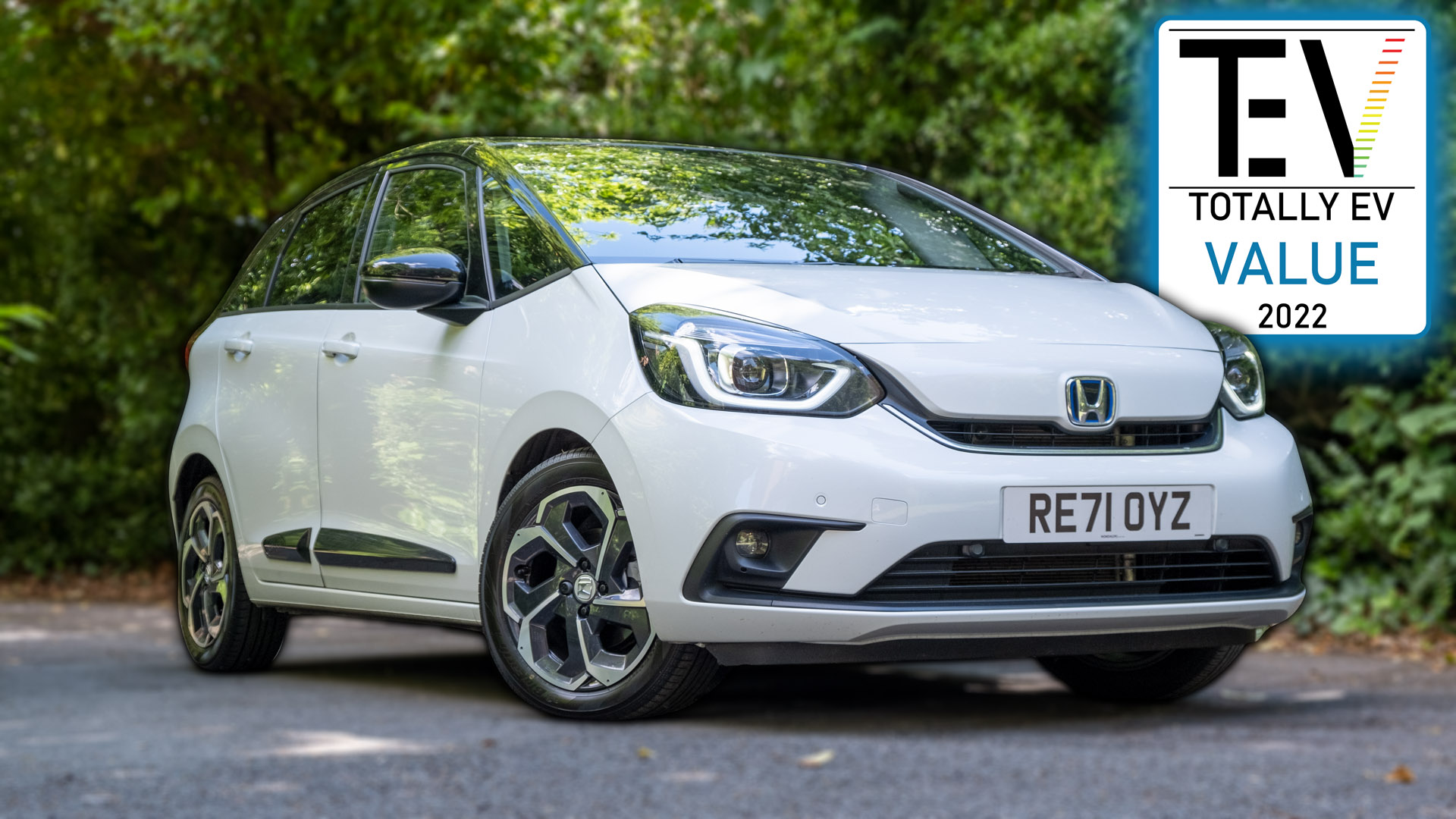Following on from the Honda City in 1981, the first-generation Jazz was released in 2001. Since its introduction has been a popular choice among consumers who want an affordable, compact car. In 2020, the Japanese automaker switched to a hybrid powertrain, solely offering the e:HEV model in the UK.
If you’d prefer to watch a review of the Honda Jazz, head on over to our YouTube channel.
Honda Jazz price & competition
Despite being electrified the Jazz still retains its affordable nature, with prices starting from £20,860 and rising to £26,410 for the EX Style, which is the model we have on review. The differences between the trim levels can be found below (click to expand):
Find the best Honda Jazz deals
When it comes to its competitors, there are a few PHEVs to consider: the VW Golf MK8 GTE at £35,960, the Mercedes A 250 e at £32,980, the Seat Leon e-Hybrid and Audi A3 TFSIe which both start from around £32,835, and the saloon-sized Skoda Octavia iV at £33,150.
Apart from part-electrified vehicles, there are a plethora of fully electric hatchbacks and saloons, such as: the BMW i4 from £51,905; the Tesla Model 3 from £45,990; the Polestar 2 from £41,900; the VW ID.3 from £35,835; the Cupra Born from £34,715; the Honda e from £34,420; the BMW i3 from £33,805; the Hyundai Ioniq Electric from £30,550; the Renault Zoe from £30,495; the Mini Electric from £28,500; Vauxhall Corsa-e from £27,055; the Nissan Leaf from £26,995; the Fiat 500 Electric from £23,835; and the Smart fortwo coupé from £20,370.
Read next: Cupra Born review: Better than the VW ID.3?
Honda Jazz exterior review
From the exterior, the new Jazz looks the part. It has a cute frontal profile, a snazzy rear design and a stylish side profile. The SR trims and above have sleek 15” or 16” alloys fitted as standard, while the entry-level SE trim has far less attractive 15” steel rims.
It should come as no surprise to learn that in the more expensive trims, the Jazz looks better; in the EX Style, for example, the built-in spoiler, black-coloured side skirts and the front fog lights give the vehicle a better stance on the road.
Read next: Seat Leon e-Hybrid review: A feature-packed plug-in hybrid
Honda Jazz interior review
Inside, the automaker has opted for a familiar design, where it has kept physical buttons by the steering wheel and around the dashboard – much preferred over touch-based input when it comes to practicality.
Speaking of which, there’s a 5” touchscreen display in the SE and a 9” display in the SR trims and above. Through the larger display, wired Apple CarPlay and Android Auto are supported – the former can be used wirelessly, too.
To connect up to the infotainment system, there’s another USB Type-A port found at the front of the centre console. In the SR trims and above, you’ll also find another Type-A port for charging in this area and a further USB port at the rear. There’s also a 12V socket at the front of the cabin for you to power a dash cam.
Moving onto the driver’s display, there’s a fully digitalized instrument cluster that also shows turn-based navigation data, which is fed through from the infotainment system. A handy battery and fuel tank indicator can be found on either side of the LCD display.
Elsewhere, the new Jazz houses a four-speaker audio system that outputs 180 Watts of power; there’s no means of upgrading the configuration. If you’d like to hear how it performs, watch our detailed review on YouTube.
Honda Jazz storage review
Now while the Jazz has a compact form factor, it still has a plethora of areas within the cabin to store your valuables. Indeed, the door bins are large enough to store a 500ml bottle, and the centre console has a non-slip bay for your smartphone, a singular cupholder and a small compartment within the centre armrest. Towards the front passenger side, there’s the glove box and even a small area above it to store your sunglasses or a small-sized purse and wallet, which is an ingenious use of space.
Buy a car phone mount on Amazon (Affiliate)
As for its boot, there’s 304 litres with the seats up and with them folded flat, there’s 1,205 litres of space; impressive for a vehicle of its size, as the Seat Leon e-Hybrid and Audi A3 TFSI e both are limited to 280 and 1,110 litres, instead. The Jazz is also plenty practical, as it has an underfloor compartment, 60:40 split-folding rear seats, and a flat loading bay. However, no matter which trim level you choose, the tailgate can only be manually-operated.
What really stands out, however, is Honda’s Magic Seats that come fitted as standard on all trim levels. Here, the entire second row can be lifted to reveal a large storage area, and with the addition of a flat footwell design, it means one can transport plant pots or even a small bicycle. Better still, as this doesn’t eat away space at the boot capacity, one can also compartmentalize storage – it’s identical to that of the Honda HR-V, which you can see in action on our YouTube channel, Instagram feed or TikTok page.
Honda Jazz comfort review
Having such a unique design from its competitors does bring a few challenges, including the placement of the rear seatbelts. Here, the automaker has opted to place the clip for the centre seat at the top of the cabin, where the seat buckles are also mismatched; if the middle seat is occupied, the two outer rear occupants are left with less room and/or will be left a little uncomfortable with the placement of the seat buckles.
Similarly, when sitting in the rear middle seat, headroom is limited whereby 6-foot (182cm) individuals will feel constricted. Those sitting in the rear outer seats will have a little more room but note legroom is compromised despite the manufacturer’s inclusion of a near-flat footwell design. At the front of the cabin, however, both headroom and legroom are a non-issue and are manually adjustable, too. In the EX trims, the steering wheel and front seats are heated.
Read next: Our favourite power banks for long journeys
The issue we have with comfort is that the seats are a little stiff – this isn’t a problem if you’re going on a short trip but can cause a bit of lower back pain on longer exertions.
As for cabin noise, the Jazz is surprisingly well insulated from the exterior environment, and while its engine can be heard trashing away at the front of the cabin, it’s nowhere near as loud as its larger sibling, the HR-V.
Read next: New Honda HR-V review: Best hybrid SUV?
Honda Jazz performance review
This brings us to performance, where its hybrid powertrain outputs 107 hp (80 kW) of power and 253 Nm of torque; similar to that of the larger Honda HR-V, which shares a similar engine and a dual-motor configuration. We had the Jazz e:HEV tested from 0-60mph in 9 seconds using Racelogic’s Vbox Sport. Top speed is rated at 108mph.
While raw performance might be of interest to some, what will be of greater importance is fuel efficiency. Here, the car’s four-cylinder 1.5-litre i-MMD petrol engine is used to both power the vehicle’s front wheels and charge the small 0.8 kWh battery pack. When there’s enough energy stored up, one can also drive in pure electric mode, thus disengaging the engine altogether from the drivetrain. When maximum power is required, both the engine and battery pack work in tandem.
Find the best Honda Jazz deals
The Electronic Control Unit (ECU) automatically and intelligently chooses which mode the vehicle should be operating in: engine-only (while charging the battery pack), engine and battery pack, or battery-only.
The transition takes place seamlessly and occurs a multitude of times on a regular drive; by looking at the instrument cluster one can see Honda’s ECU relentlessly changing the vehicle’s power delivery in order to maximise fuel efficiency. While the behaviour can’t be customised, it does a stellar job of charging the battery while on the motorway, and opts for pure EV power when pottering around town.
Note, when in the Normal or Eco driving modes, the vehicle opts for one of the three methods of power delivery, wherein the latter it’ll try to use as much electric drive as possible. In Sport mode, however, the 1.5-litre engine is permanently engaged.
All this wizardry is certainly riveting, however, we still only managed to attain 51 MPG in our mixed driving tests – a similar figure to that of the HR-V. By comparison, the Seat Leon e-Hybrid and Audi A3 TFSI e both attained 55 MPG – both PHEVs endured the same testing methodology.
Nonetheless, the Honda Jazz has the ability to recoup energy back into the 0.8 kWh battery pack via regenerative braking; B-mode, which can be initiated by shifting down on the gear selector, offers a sufficient amount of deceleration – it’s not strong enough to drive with the accelerator pedal only (ie. one-pedal driving) but is still handy around the city. Alas, there’s no means of customising the level of deceleration as there are no flappy paddles behind the steering wheel.
Similarly, one doesn’t have the ability to adjust the gears, as the electrified Jazz is fully automated. The Jazz uses a Continuously Variable Transmission (e-CVT) system, which gives the sensation of “shifting through the gears”, but in fact operates on a singular system; there are even fake gear shift noises that can be heard via the speaker system, with the noises ramping up in Sport mode. Despite the manufacturer’s label of having a CVT gearbox, there’s none present.
Indeed, the engine itself ramps up when power is required or will stay at a higher RPM in Sport mode for a bettered throttle response. According to Honda: “the clutch system can engage to provide a single-speed direct drive from the ICE when required at higher speeds”.
Despite the lack of customisation, the new Jazz is responsive to power input in normal driving scenarios. However, Honda’s compact car doesn’t have a one-to-one driver’s feel; the steering wheel feels a little unresponsive, and one might not have the highest level of confidence when cornering at speed, especially given the vehicle operates on a front-wheel drive system.
As for its suspension setup, there’s minimal body roll when driving around windy country roads, but is a little stiffer than we would have imagined for inner-city drives – speed bumps and potholes can still be felt. Given the vehicle’s target audience, one might have expected a soft and cushiony ride, but alas that’s not quite the case.
Read next: Audi A3 TFSI e review: A sporty plug-in hybrid
Honda Jazz safety review
Moving onto safety, the new Jazz scored 5/5 stars in Euro NCAP’s rigorous crash tests; it managed an impressive 87% and 83% in its Adult Occupancy and Child Occupancy tests, respectively.
As for the driver assistance systems, the vehicle has a plethora of them fitted as standard: Forward Collision Warning, Intelligent and Adjustable Speed Limiter, Lane Departure Warning, Lane Keep Assist System, Road Departure Mitigation, Traffic Sign Recognition System, and Adaptive Cruise Control. All of which are a welcome sight, but the latter system isn’t as smooth as rival offerings, where the braking is a little harsh and makes for a less seamless driving experience on more mundane drives.
In the EX trims, you also get Blind Spot Information including Cross Traffic Monitor – useful for motorway commutes and parking, respectively.
When it comes to visibility, it’s faultless. The A-pillars are slender and have a large cut-out to aid when cornering; the front, side and rearview windows are plenty large. Front and rear parking sensors come fitted in the SR trims and above, while a rearview camera is only present in the EX trims; it’s disappointing that these do not come fitted as standard on all models.
Read next: Skoda Enyaq iV review: The Volkswagen ID.4 alternative
TotallyEV’s verdict on the new Honda Jazz
Overall, the Honda Jazz e:HEV is a compact hybrid vehicle that has its quirks. While we would have preferred bettered fuel economy, it’s still a good proposition for eco-conscious consumers who don’t have access to a charge point. Given its asking price and feature-rich driver assistance systems, it receives TotallyEV’s Value award.
Find the best Honda Jazz deals
If you do have the means of regularly charging, it’s worth considering the Audi A3 TFSI e or even the Seat Leon e-Hybrid plug-in hybrids. Should 300 miles suffice on a single charge, there are a few all-electric vehicles, such as the stylish Cupra Born, the familiar VW ID.3, the compact Renault Zoe and the comfy Nissan Leaf; all of which are excellent choices in their respective categories.
What do you make of the hybrid Honda Jazz? Let us know in the comments section below or via social media; we’re on: YouTube, Instagram, Facebook, Twitter and LinkedIn.

